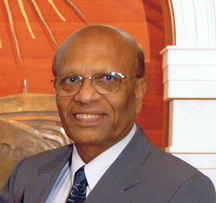The Jain community is predominantly a business community and so everything is generally a business and the matrimonial relations are no exception. The menace of dowry (giving money by the bride’s family to groom’s family) for solemnizing matrimonial relations has been around for a long time. It is common for Jains as well as non-Jains and is practiced in many parts of India (in some places less and in some places more). Within most of the business communities, it is much more common. As the affluence, position, prestige, and power of the groom’s family increase, so does the amount of dowry in direct or exponential proportion. Also, every year, no matter how many legal laws are enacted against this, the scope and intensity of dowry keeps on increasing. There is absolutely no sign of decreasing. The dowry is given either under the table or openly (probably both) as a show for the community. One only has to attend an Indian wedding to see the display of affluence. But strangely, no one questions the dowry practice, its modus operandi, scope, size, and why it should be denounced and condemned.
The pity is that generally even the Jain sadhus do not talk much about it. Hardly anyone equates dowry with himsa. As a result, the practice continues and thrives. Many times, this dowry is lifelong and continues (even after the marriage of the girl) in the form of gifts, jewelry, clothing, and cash, through the tradition of milni and furnishings at many Indian festivals, ceremonies, celebrations, births of children, family visits and even during visits to see sick relatives in the hospital.
This practice is horrendous. Many parents cannot afford to get their daughters married. If they do, they incur heavy loans, lose their homes and lifelong savings, resulting in worrisome lives. Even, quite a few girls remain unmarried or get married to unsuitable and incompatible matches (to the old, invalid, poor, sick, cruel, or criminal). Since the practice of dowry and lifelong giving is common, there are continuous and constant tensions, strife, quarrels, and domestic fights in the families regarding the amount and frequency of the dowry. As a result, some marriages end up like living hells. Bride abuse, torture, burning, and suicides happen quite often. Such is the state of marriages shadowed by dowry. o About sixty years ago, one Jain muni (monk) who abhorred this menace came to the prominent area of Jains in Delhi. He delivered many sermons and lectures against this horrible practice and undertook a fast to death till the Jain community takes vows to stop this practice. The community, other than paying lip service and verbal sympathy to his cause, did absolutely nothing. After about two to three weeks of fast, some prominent members of the Jain community went to meet the muni ji and persuaded him to break his fast as the Jain community will not change (their conscience was not even pricked) and his death and sacrifice will go in vain. He realized the reality, broke his fast and to the best of my knowledge never again returned to Delhi.
- In Rohini (New Delhi), there is a Saroj Hospital. It belongs to a non-Jain family. In the lobby of that hospital, there is a bust of Saroj, a young woman, erected by her parents. It reads “in memory of our loving daughter who became a victim of dowry and death by burning by her in-laws.” There must be stories like Saroj’s amongst Jains, too.
- As soon as my first child (a son) was born in New Delhi more than fifty years ago, I went to a Jain sadhu and asked him to administer me a lifelong vow that I would neither demand nor accept any dowry, in any shape or form, for my son. The monk thought that I was crazy, but he did administer the oath to me anyway. Luckily, I immigrated to USA, my son got married more than twenty-five years ago, there was no dowry whatsoever, and hence my vow and willpower remained untested.
- I go to India quite often. Most of my friends and relatives frequently talk about the practice of dowry in a boasting and praising fashion. They don’t think there is anything wrong about it. I find myself lonely and out of reality in such discussions.
- I have many nieces, nephews, and other relatives in India to whom I am supposed to visit either to give milni (an offering of cash or gold coin) or receive one (depending up on the nature of relationship) to or from my niece’s or nephew’s in-laws. Because I will not give or take any milni, I generally remain an outcast as they will not invite or meet with me. I am quite happy with this treatment.
 Dr. Sulekh Chand Jain
Dr. Sulekh Chand Jain
